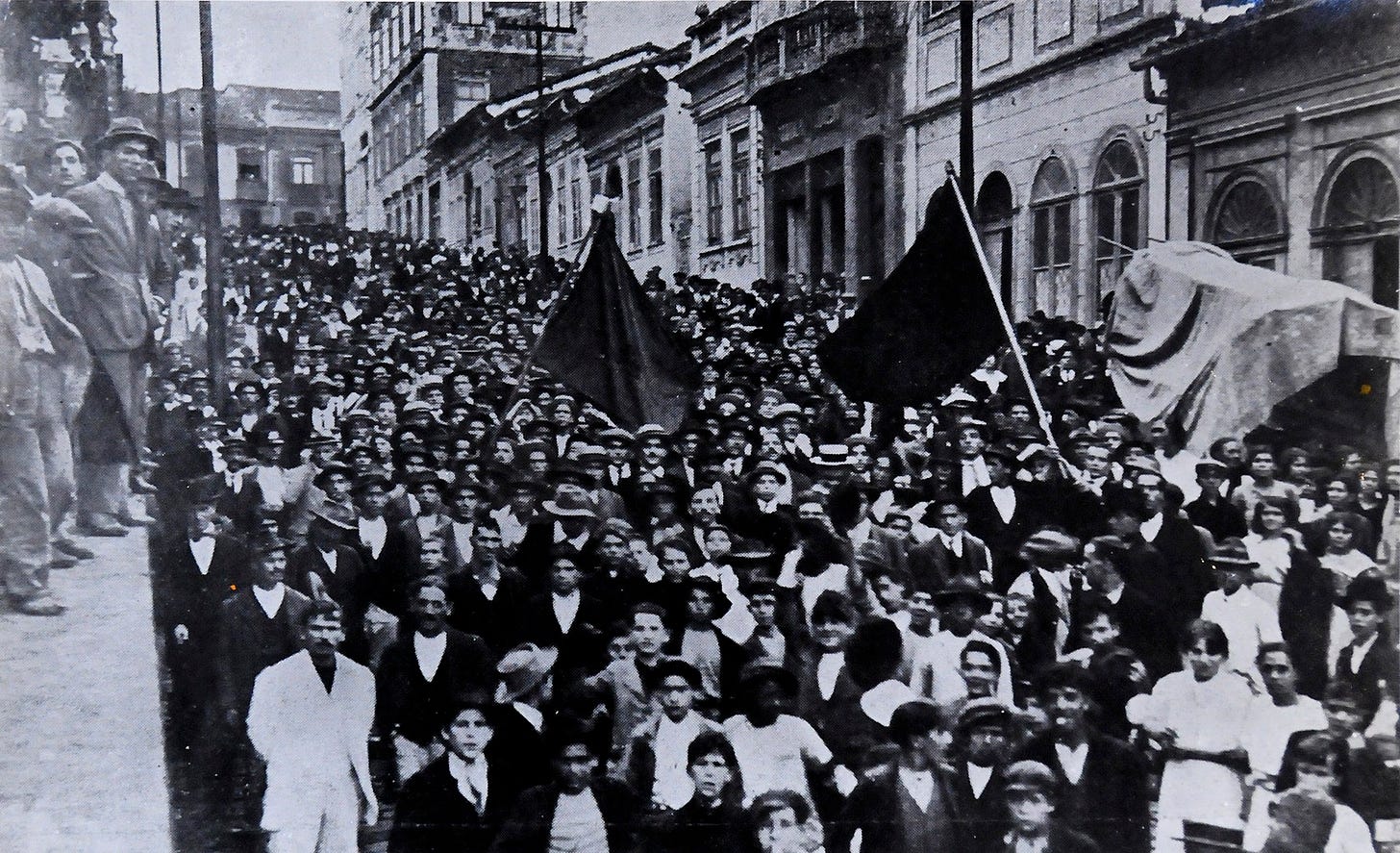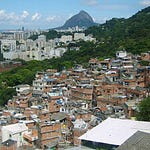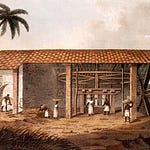Anarcho-syndicalism emerged in Brazil as a potent force shaping the nation’s labor movement from the late 19th century into the 1920s. Rooted in immigrant radicalism and revolutionary syndicalist principles, it sought to dismantle capitalist hierarchies through direct action and worker self-organization. This essay examines its rise as a transformative labor ideology, its attempts to catalyze revolutionary change, and the structural limitations that precipitated its decline—while assessing its enduring influence on Brazilian social movements.
Origins and Ideological Foundations
The anarcho-syndicalist movement arrived via European immigrants—predominantly Italians, Spaniards, and Portuguese—who transplanted radical traditions forged in contexts of industrial exploitation. These militants established mutual aid societies that evolved into militant unions, rejecting electoral politics in favor of direct action and economic federalism. The 1906 First Brazilian Workers’ Congress formalized these principles, founding the Confederação Operária Brasileira (COB) and endorsing workplace autonomy, anti-statism, and internationalism25.
Key to anarcho-syndicalism’s appeal was its alignment with immigrant workers’ realities. Unlike reformist socialism, it required no assimilation into Brazilian nationalism—a critical factor given that less than 2% of São Paulo’s immigrant workforce naturalized by 19203. The movement’s emphasis on union neutrality allowed ethnically diverse workers to unite around shared class interests, though this also masked unresolved racial tensions, particularly the exclusion of Afro-Brazilian laborers from leadership roles36.
Strikes as Revolutionary Laboratories
The 1917 São Paulo General Strike marked anarcho-syndicalism’s zenith. Sparked by textile workers demanding an eight-hour day and abolition of child labor, it expanded into a citywide insurrection involving 70,000 workers510. Anarchists leveraged neighborhood councils (comitês de bairro) to coordinate food distribution and childcare—proto-syndicalist structures demonstrating dual power potential. However, the strike’s resolution through employer concessions revealed tensions between revolutionary rhetoric and pragmatic gains9.
The 1918 Insurrection: Ambition and Betrayal
Revolutionary ambitions culminated in the 1918 Rio de Janeiro uprising, a botched attempt to overthrow President Delfim Moreira. Led by anarchists like José Oiticica and Astrogildo Pereira, plans involved seizing military arsenals and declaring a soviet republic. Government infiltration—notably by spy Jorge Elias Ajuz—led to mass arrests and exposed strategic naivete: fewer than 400 armed workers faced 3,000 troops47. The failure underscored anarcho-syndicalism’s reliance on spontaneous worker militancy over disciplined insurrectionary planning.
Repression and Co-optation
State repression intensified post-1919, using deportation laws (e.g., the 1921 Adolfo Gordo Law) to target immigrant leaders. Police raids dismantled unions like the Federação Operária do Rio de Janeiro, while propaganda recast labor demands as “foreign subversion”311. Getúlio Vargas’ 1930s labor code (Consolidação das Leis do Trabalho) institutionalized this crackdown, replacing autonomous unions with state-controlled sindicatos28.
Internal Contradictions
Ethnic Fragmentation: Despite rhetorical internationalism, Portuguese and Italian anarchists often sidelined Afro-Brazilian workers. During the 1917 strikes, authorities exploited this divide by recruiting Black strikebreakers—a tactic anarchists failed to counter systematically36.
Strategic Inflexibility: Anarcho-syndicalists dismissed electoral engagement even as populists like Vargas courted urban workers. Their purist rejection of “bourgeois politics” left a vacuum filled by the Brazilian Communist Party (PCB) after 192211.
Gender Blindness: While women constituted 40% of São Paulo’s textile workforce, anarchist publications like A Plebe rarely addressed gendered exploitation beyond opposing child labor—a limitation critiqued by later feminist scholars912.
Legacy and Modern Echoes
Though marginalized by the 1930s, anarcho-syndicalist tactics resurfaced in Brazil’s 1960s-1980s labor struggles. The Movimento dos Trabalhadores Rurais Sem Terra (MST) adopted direct action and horizontal organizing, while 2013 anti-World Cup protests revived syndicalist themes of anti-statism and communal autonomy812. Contemporary groups like the Coordenação Anarquista Brasileira (CAB) blend especifismo organizing with indigenous and quilombola solidarity, addressing historical racial blind spots512.
Conclusion
Brazilian anarcho-syndicalism exemplified both the revolutionary potential and pitfalls of class-centric organizing. Its emphasis on workplace democracy inspired generations of labor activists, yet its inability to reconcile immigrant leadership with Brazil’s racialized social order limited its longevity. The movement’s legacy lies not in sustained institutional power but in its demonstration of worker agency—a reminder that, as 1917 strike leader Edgard Leuenroth declared, “the emancipation of workers remains their own task”10.
Citations correspond to numbered sources in the provided materials. 23456789101112
Citations:
https://en.wikipedia.org/wiki/1918_Rio_de_Janeiro_anarchist_insurrection
https://brill.com/previewpdf/book/edcoll/9789004188488/Bej.9789004188495.i-432_011.xml
https://theanarchistlibrary.org/library/jesse-cohn-anarchism-in-brazil
https://read.dukeupress.edu/hahr/article/71/4/809/146736/Anarchist-Ideology-Worker-Practice-The-1917
https://libcom.org/article/history-anarchist-movement-brazil-edgar-rodrigues
https://freedomnews.org.uk/2024/11/15/the-ruptures-of-militant-anarchism-in-brazil/
https://read.uolpress.co.uk/read/brazil/section/0416a5eb-7ffb-4b61-863c-e2c379224814
https://anarchistnews.org/content/ruptures-militant-anarchism-brazil
https://encyclopedia.1914-1918-online.net/article/anarchism-latin-america/
https://libcom.org/article/1917-1918-brazilian-anarchist-uprising
https://read.dukeupress.edu/hahr/article-pdf/57/2/254/734434/0570254.pdf
https://en.wikipedia.org/wiki/History_of_anarcho-syndicalism











